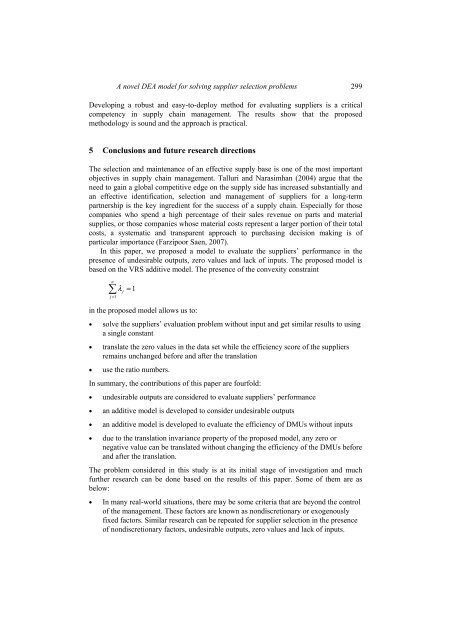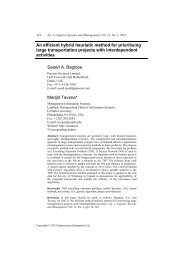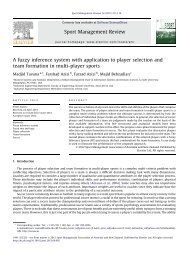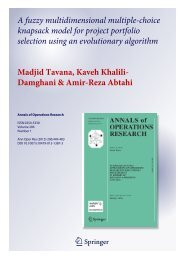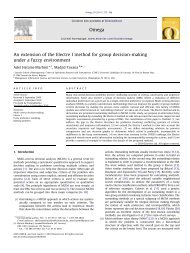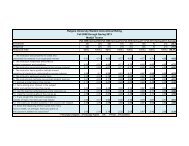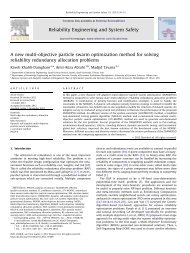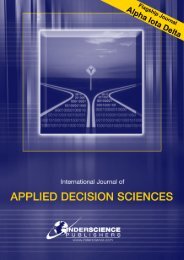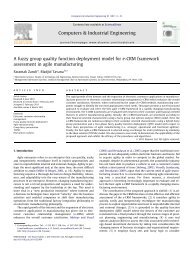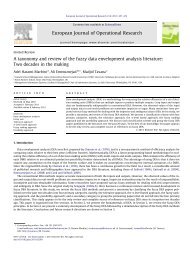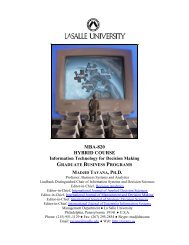A novel Data Envelopment Analysis model for ... - IngentaConnect
A novel Data Envelopment Analysis model for ... - IngentaConnect
A novel Data Envelopment Analysis model for ... - IngentaConnect
- No tags were found...
Create successful ePaper yourself
Turn your PDF publications into a flip-book with our unique Google optimized e-Paper software.
A <strong>novel</strong> DEA <strong>model</strong> <strong>for</strong> solving supplier selection problems 299Developing a robust and easy-to-deploy method <strong>for</strong> evaluating suppliers is a criticalcompetency in supply chain management. The results show that the proposedmethodology is sound and the approach is practical.5 Conclusions and future research directionsThe selection and maintenance of an effective supply base is one of the most importantobjectives in supply chain management. Talluri and Narasimhan (2004) argue that theneed to gain a global competitive edge on the supply side has increased substantially andan effective identification, selection and management of suppliers <strong>for</strong> a long-termpartnership is the key ingredient <strong>for</strong> the success of a supply chain. Especially <strong>for</strong> thosecompanies who spend a high percentage of their sales revenue on parts and materialsupplies, or those companies whose material costs represent a larger portion of their totalcosts, a systematic and transparent approach to purchasing decision making is ofparticular importance (Farzipoor Saen, 2007).In this paper, we proposed a <strong>model</strong> to evaluate the suppliers’ per<strong>for</strong>mance in thepresence of undesirable outputs, zero values and lack of inputs. The proposed <strong>model</strong> isbased on the VRS additive <strong>model</strong>. The presence of the convexity constraintn∑j = 1λ = 1jin the proposed <strong>model</strong> allows us to:• solve the suppliers’ evaluation problem without input and get similar results to usinga single constant• translate the zero values in the data set while the efficiency score of the suppliersremains unchanged be<strong>for</strong>e and after the translation• use the ratio numbers.In summary, the contributions of this paper are fourfold:• undesirable outputs are considered to evaluate suppliers’ per<strong>for</strong>mance• an additive <strong>model</strong> is developed to consider undesirable outputs• an additive <strong>model</strong> is developed to evaluate the efficiency of DMUs without inputs• due to the translation invariance property of the proposed <strong>model</strong>, any zero ornegative value can be translated without changing the efficiency of the DMUs be<strong>for</strong>eand after the translation.The problem considered in this study is at its initial stage of investigation and muchfurther research can be done based on the results of this paper. Some of them are asbelow:• In many real-world situations, there may be some criteria that are beyond the controlof the management. These factors are known as nondiscretionary or exogenouslyfixed factors. Similar research can be repeated <strong>for</strong> supplier selection in the presenceof nondiscretionary factors, undesirable outputs, zero values and lack of inputs.


